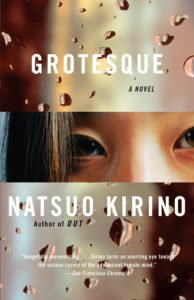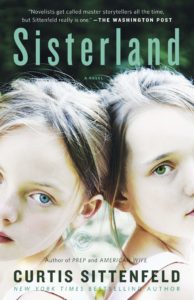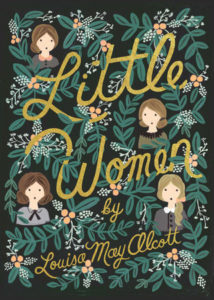I was born an only child, and to my sorrow remained so. Growing up I longed for a brother or sister, someone I could connect with in a special way. All my life I’ve been searching, but that connection remains a mystery to me, a fascinating puzzle I’ve yet to resolve. Which is why in my novels I try to peel back the layers of the particular closeness between siblings. And yet, as I’ve discovered to my great surprise, many siblings are not close. In fact, a bitter enmity has arisen between them, something that, again, I cannot understand. To me, having a sibling is so precious I can’t fathom how people could throw it away as if it was yesterday’s paper.
And, like yesterday’s paper, that rancor, or that love, originates in childhood, even if it doesn’t bloom until adulthood. These powerful emotions, often misunderstood, sometimes willfully so, are my meat and potatoes when I sit down to write. The human psyche complicated, often housing conflicting emotions—how can we love and hate the same person? And yet we do. The conflict is universal. It’s part of the human condition.
Herewith, are five novels I’ve read and loved, that deal with what life is like for two sisters, in different countries, with different values, and even in different time periods. But one thing connects them all: they are presented to us in three thrilling dimensions with all their frailties, their unresolved desires, and their bitter-sweet experiences intact.

Grotesque by Natsuo Kirino
Deservedly famous in her native Japan, Natsuo Kirino remains mostly undiscovered here in America. Ostensibly a crime novel, this is more the psychological pain inflicted on one sister, the unnamed narrator by her gorgeous sister, Yuriko. The two girls are in Q High School and the pressures on teenagers in this setting is starkly laid out, as is every other aspect of Japanese culture on which the book touches. The narrator comes to hate her sister, her family, and everyone around her, isolating herself. On the other hand, Yuriko discovers the effect she has on young men and decides to make her living as a prostitute. The depiction of that life on the nighttime streets of Tokyo is harrowing. When Yuriko and her streetwalker friend are both murdered in the same gruesome fashion, the narrator puts aside her hatred for her sister. In the process, she discovers Yuriko’s journal. The rigidness of Japanese society, limiting the ability of women to navigate it successfully is just as trenchant as the revelations of the bond between the two sisters and how that changes the narrator’s life for good.

The Vanishing Half by Brit Bennett
If there is one theme running through pretty much every novel about sisters it’s the divergent paths each of them takes. How could it not be otherwise? Brit Bennett’s brilliant spin on the theme begins with twin sisters who live in a very unusual town in Louisiana. All the inhabitants are Black, but exceptionally light-skinned. Years after watching their father lynched by a white mob, the twins, having had a bellyful of their hometown, run away to New Orleans. They are 16. Even so, Stella gets involved with a man and disappears. Desiree marries an abusive Black man and finally leaves him in D.C, returning to their hometown. Meanwhile, Stella sort of falls into passing as white, marries into a typical white upper middleclass life where both her husband and neighbors take for granted that she, too, is white. The story unspools from there. Only years later, Stella’s truth is accidentally discovered by Desiree’s son. Every page of this book is a marvel, and a keenly observed dissection of American life from the 1940s to the 1990s in both Black and white America.

Sisters by Daisy Johnson
Two sisters, born eight months apart, move with their mother into a run-down seaside house, after an undefined, but hinted at, event at the children’s school. But the book isn’t about what happened, but what occurred before and after. The older sister, September, is more than a bully, she’s a sadist. July, by contrast, is a masochist, completing a dangerous circle. Their mother is so filled with grief (unexplained until near the end of the book) she can’t even look at her daughters’ faces, spending most of her time shut up in her bedroom. Creepy things in and around the house start to occur, but this isn’t that kind of horror story. It’s an altogether different kind of horror story that is more real, more gripping, and far more unsettling than ghosts or ghouls could ever be. Peering inside the minds of sisters tied by a horrendous umbilical was never so chilling.

Sisterland by Curtis Sittenfeld
A near-perfect novel of family, growing up, child-rearing, and, of course, the ties that bind two sisters who have psychic powers. Not that this is a fantasy novel; not at all. Kate decides to bury her power and lead a normal life, while Vi becomes a professional psychic. This all takes place in Sittenfeld’s beloved St. Louis, and the benign, midwestern setting does much to highlight the two sisters and the divergent paths they decide to take. In glowing, burnish, understated prose, Sittenfeld allows both her expertly drawn protagonists the room to grow, fall apart, and come together. A beautiful novel with vivid insights into the vicissitudes of American married life, friendships, both child and adult, and the meaning of sisterhood.

Little Women by Louisa May Alcott
Received wisdom is that Jane Austen’s Emma is the Ur-novel when it comes to women in fiction, changing the landscape of fiction as a whole with this willful heroine. But in the end Emma is a novel of manners. No matter how willful Emma is she still operates more or less within the conventions of her time. Little Women is my Ur-novel, the one I come back to time and again to read about and enjoy the story of four sisters, Meg, Beth, Amy, and Jo. Especially Jo. In one way or another, she is the touchstone for all my female characters, who exist and operate, as Jo does, outside the confines of society’s conventions, signaled by Jo taking the masculine contraction of her name, Josephine. They march, as Jo does, to the beat of their own individual drum. She rejects the conventional marriage approved of by her mother, leaves home, and lives in a boardinghouse in New York City. Since it’s likely the novel is either autobiographical or partly so, Jo is a writer. Her first novel is edited so severely by the publisher no critic can make sense of it. In the end, after receiving an inheritance, she settles down, opens a school for boys, and dreams of writing again.

Cantoras by Carolina De Robertis
So I’m going to stretch the guidelines of my remit for this column a bit for this sixth book. I do so because Cantoras is so extraordinary, so overlooked, so magnificent that it demanded inclusion here. The five queer women who inhabit this book, this world fully, live in the worst of times, mainly 1977 Uruguay, when a brutal military dictatorship is in power, having crushed the last remnants of dissent. These five brave and fierce women are thrust headlong into this nightmare scenario, not without frightening consequences for being young, unmarried, and worst of all in the eyes of both their parents and the junta, queer. And yet they persevere through every hardship, every diabolical situation, becoming not only sometimes lovers, but mostly fast friends, and then, family to each other. Sisters in every sense of the word. This is a novel not to be missed.
***


















